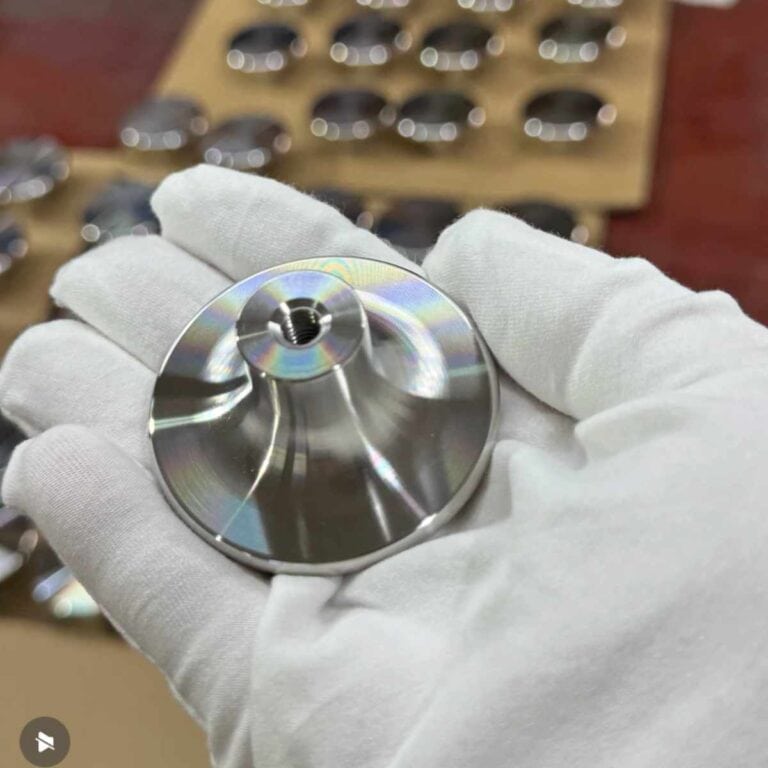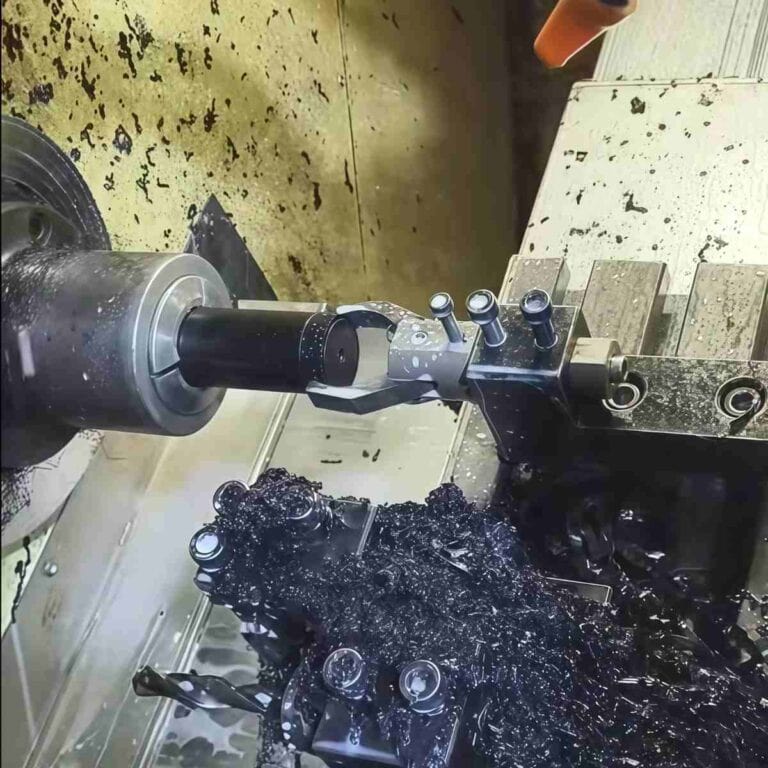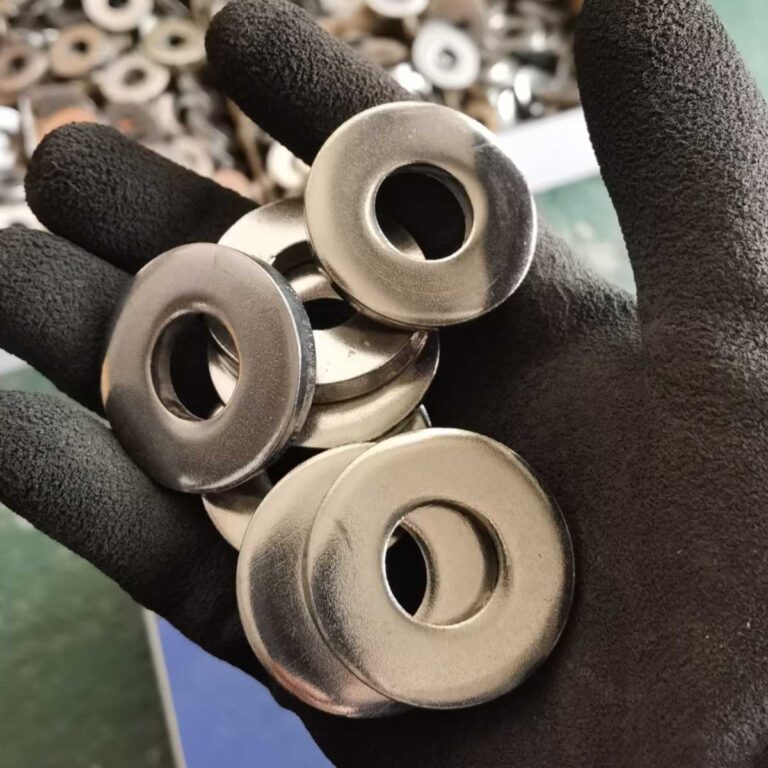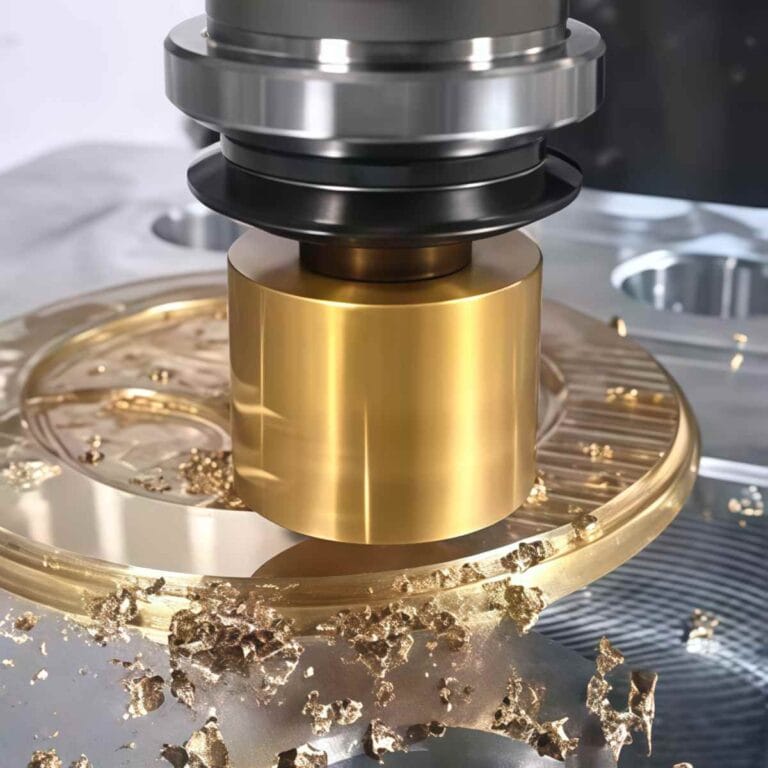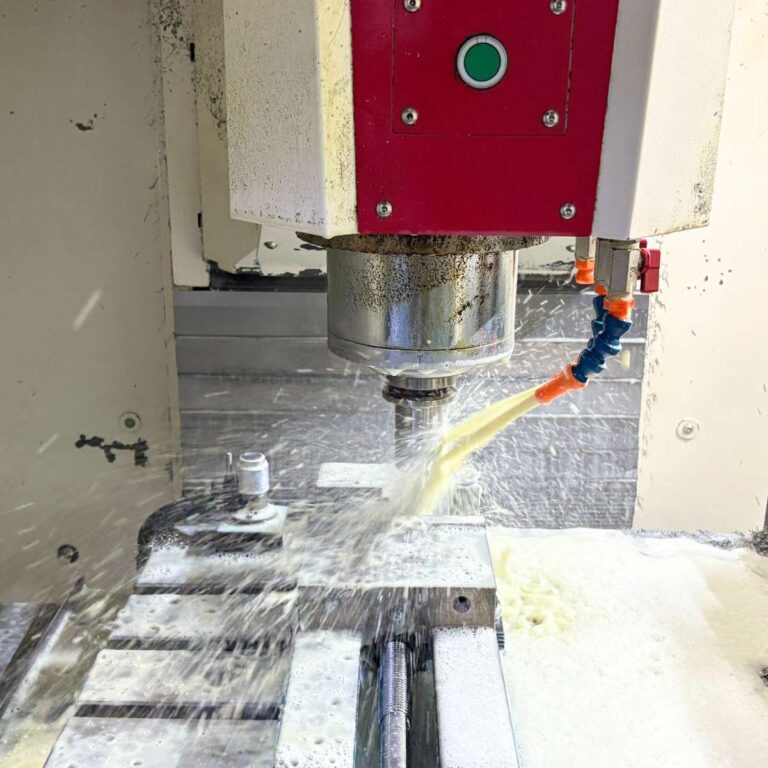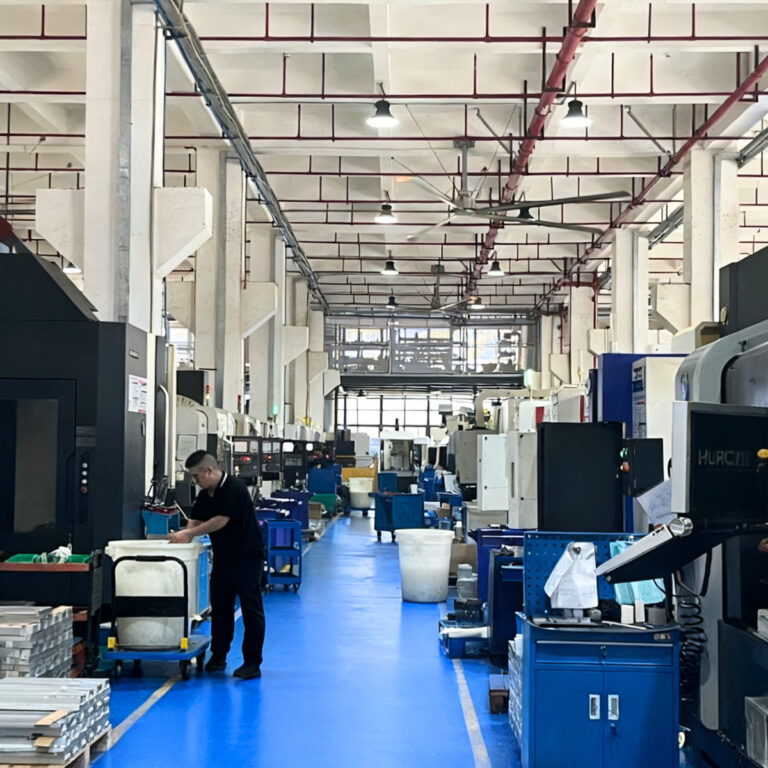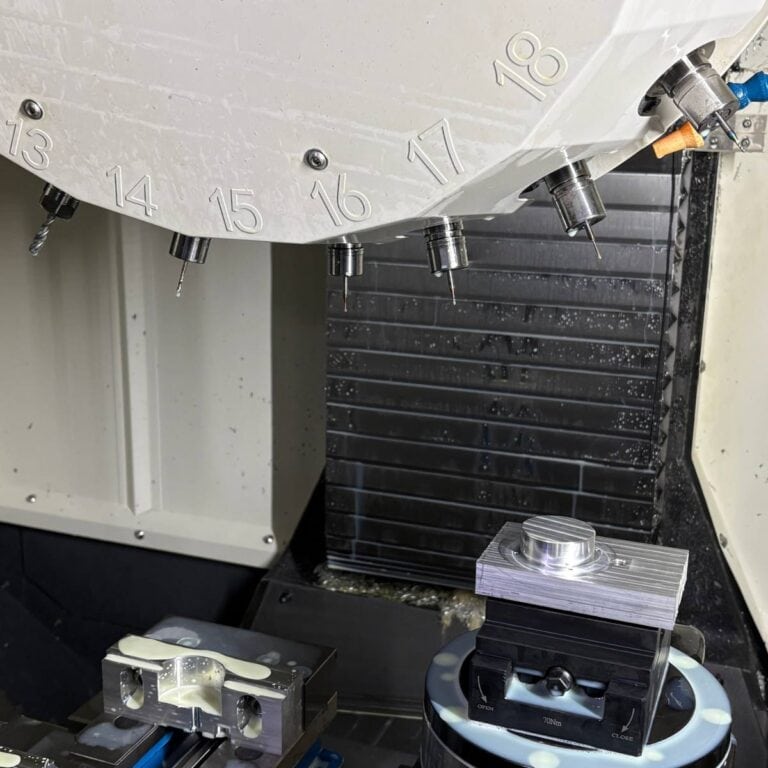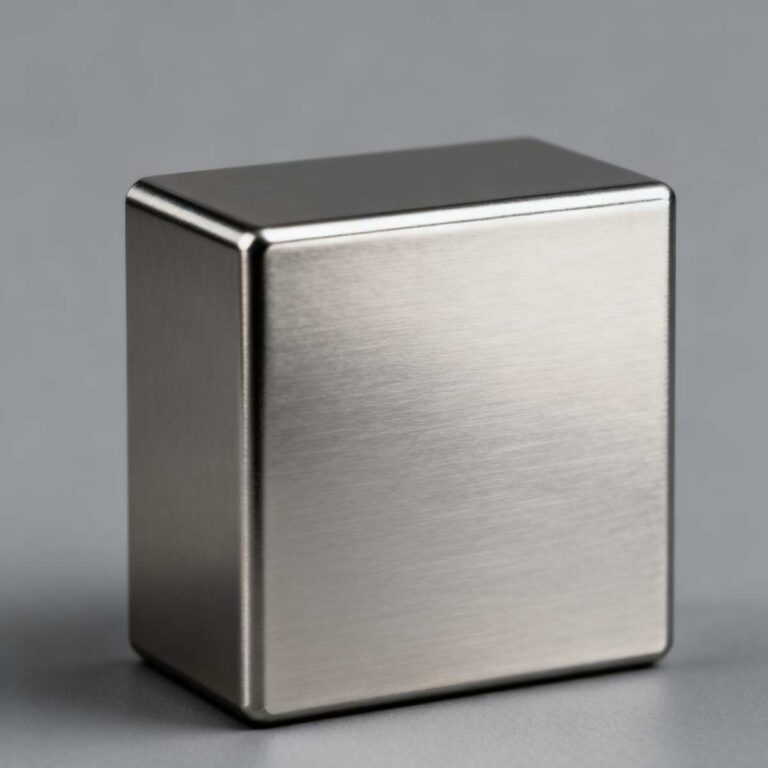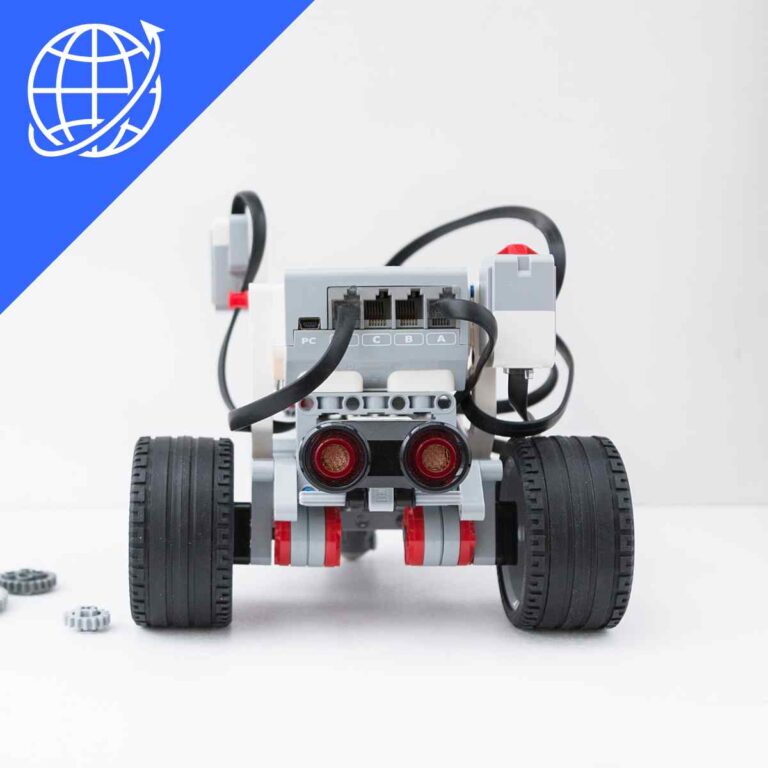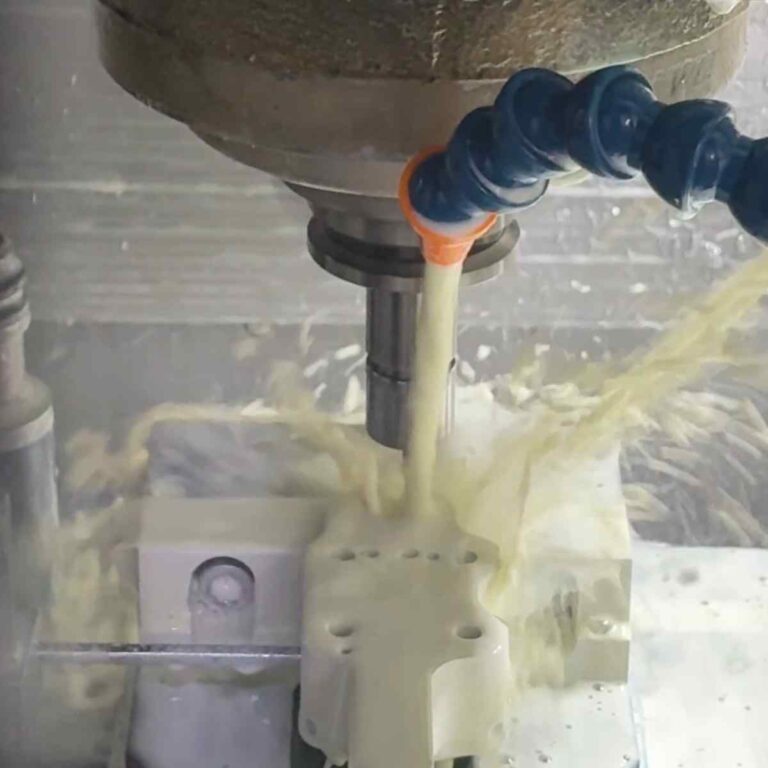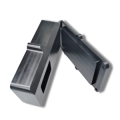What is cnc?In modern manufacturing, CNC (computer numerical control) technology has become an indispensable part of efficient and precise processing. It replaces traditional manual operations through automated control systems, providing high-precision and high-efficiency processing capabilities for multiple industries. Through this article, I hope to share with you the basic knowledge and principles of CNC and how it plays a key role in various industries.
What Is CNC
CNC (Computer Numerical Control) is a technology that uses computer programs to automatically control machine tools and equipment, and can efficiently and accurately complete complex processing tasks. This technology allows the manufacturing industry to bid farewell to the inefficient mode of traditional manual processing and liberates humans from tedious operations.
For example, in the process of manufacturing automobile engines, CNC technology can process parts such as cylinder blocks, pistons and crankshafts with tolerances within ±0.01 mm, ensuring high performance and long life of the engine. CNC is not only suitable for metal processing, but can also process plastics, composite materials and even ceramics, greatly broadening the scope of application in the manufacturing industry.
How CNC Works
CNC is the core of modern manufacturing technology. It combines precision programming, complex system composition and scientific operation steps to ensure the efficiency and high quality of processing. From code writing to actual operation, every step requires fine coordination.
Understanding CNC Programming (G-Code And M-Code)
CNC programming can be seen as the “blueprint” of the entire machining process. Among them, G code is mainly responsible for the movement of the tool, such as linear cutting (G01) and circular interpolation (G02/G03), while M code is used to control the auxiliary functions of the machine, such as coolant on (M08) or spindle off (M05).
For example, when machining turbine blades for an aerospace project, my G-code design contained more than 2,000 lines of instructions, with a cutting speed of 300 mm per minute and a feed rate of 0.1 mm/rev. During machining, the coolant was set to start when the tool temperature reached 45°C through the M code, ensuring that the material did not degrade under high temperature conditions. Ultimately, this programming enabled the blade machining accuracy to reach ±0.005 mm, and the surface finish to reach Ra0.6μm.
Data analysis:
- G Code Example : G01 X10 Y20 F500 (move linearly to X=10, Y=20 at 500 mm/min)
- M Code Example : M03 S2000 (start the spindle at 2000 rpm)
Components Of A CNC System
Machine Control Unit (MCU)
MCU (Machine Control Unit) is the core part of the CNC system and is known as the “brain” of the machine. Its main function is to store, read and execute processing instructions, and to control every movement of the machine tool in real time. For example, when processing a complex mold, I used MCU to dynamically adjust the tool path, and improved the original surface finish of Ra0.8μm to Ra0.4μm. This optimization alone increased the mold yield by 15%.
The MCU can also monitor the temperature, vibration and spindle speed during the processing through integrated sensors. Taking the processing of aircraft engine turbine blades as an example, when the temperature sensor detects that the tool temperature is close to 50°C, the MCU immediately starts the coolant circulation system to prevent the material from deforming due to overheating. At the same time, it can also record processing data for subsequent quality analysis and optimization.
Data example:
- Storage Instruction Quantity : 3000 G codes and M codes
- Processing Accuracy : improved to ±0.005 mm
- Coolant Response Time : <1 second
Coordinate Systems For CNC Machines
The coordinate system of a CNC machine is the key to precision machining. It is based on the three basic axes of X, Y, and Z, while advanced machines are also equipped with three rotation axes of A, B, and C to support five-axis or multi-axis machining. This system allows the tool to move freely in three-dimensional space, thereby machining complex surfaces and geometric shapes.
I used five-axis machining technology in an aviation wing machining project, which required precise milling of the wing surface with an allowable error of only ±0.01 mm. Through the coordinated operation of the coordinate system, the tool path can perfectly cover the complex wing curve, and the final wing surface finish reaches Ra0.8μm, while the drag coefficient of the aerodynamic performance test is reduced by 12%.
Data example:
- Number Of Basic Axes : 3 (X, Y, Z)
- Number Of Rotation Axes : 3 (A, B, C)
- Processing Accuracy : ±0.01 mm
- Finish : Ra0.8μm
The Main Steps Of CNC Operation
Creating CAD Models
The first step in CNC machining is to create a CAD (computer-aided design) model, which is the basis for turning ideas into manufacturable parts. I once designed a smart watch case, which required considering multiple factors, including the smoothness of curves and assembly accuracy. Through the optimization function of the CAD software, I adjusted multiple tiny details in the model and finally ensured that the assembly error was controlled within ±0.1 mm. For mass production, such accuracy greatly reduces the rework rate and increases production efficiency by 20%.
Data example:
- Design Time : average 10 hours/part
- Assembly Accuracy : ±0.1 mm
- Production Efficiency Increased : 20%
Convert To CNC Compatible Format
After completing the CAD design, converting the model into G-code that the CNC machine can understand is a critical step. I usually use dedicated software to complete this process, such as Fusion 360 or Mastercam, which can generate accurate G-code in minutes. With the built-in simulation function, I can preview the machining path in advance and find potential problems. For example, in the machining of a medical device part, I found that the tool path had a collision risk through simulation, and timely adjustments were made to avoid damaging expensive materials.
Data example:
- Changeover Time : 3-5 minutes/part
- Processing Path Optimization Rate : reduce collision risk by 90%
- Reduction In Material Waste : 15%
Setting Up The Workpiece And The Machine
Before processing, the installation of the workpiece and the debugging of the machine determine the final processing accuracy. I often use laser to calibrate the workpiece, which can control the position error within 0.02 mm. When processing a complex mold, I also use the automatic tool setting function to ensure that the height and angle of the tool are optimized, and the final key dimension tolerance of the mold is kept within ±0.005 mm.
Data example:
- Position Error : ≤0.02 mm
- Automatic Tool Setting Time : 2 minutes
- Tolerance Accuracy : ±0.005 mm
Execute Machining Program
When all preparations are completed, the machine starts running according to the preset program. When machining a piece of aerospace-grade aluminum, I set the depth of cut per cut to 0.05 mm and used coolant to reduce cutting heat. This not only ensures the smoothness of the part surface (Ra0.8μm), but also significantly improves the processing efficiency, shortening the processing that originally required 4 hours to 3 hours.
Data example:
- Cutting Depth : 0.05mm/knife
- Processing Finish : Ra0.8μm
- Processing Time Savings : 25%
Types Of CNC Machines And Their Operations
There are many types of CNC machines, each type is designed for specific processing needs, providing efficient solutions for the manufacturing industry. From metal cutting to complex surface engraving, to high-precision laser cutting, CNC technology is widely used in multiple industries, not only improving processing efficiency, but also meeting the strict requirements of modern manufacturing for precision and complexity.
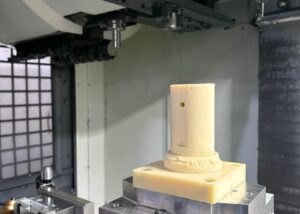
Below are some common CNC machine types and how they operate, with numerical examples for each machine to better understand its application :
CNC Milling Machine
With its high precision and flexibility, CNC milling machines are ideal tools for processing flat surfaces and complex curved surfaces. When processing a car dashboard, I used a multi-axis milling process to optimize the cutting path to ensure that every detail achieved the desired effect. The surface roughness finally reached Ra0.8μm, while the cutting depth was strictly controlled within 0.05mm, and a single processing cycle only took 15 minutes. This precise processing method not only improves production efficiency, but also significantly reduces the cost of subsequent polishing processes.
Data Example:
- Surface Roughness : Ra0.8μm
- Cutting Depth : 0.05mm
- Processing Time : 15 minutes/cycle
During a mold making task, I was once again impressed by the performance of the CNC mill. I need to machine a complex curved mold, which is mainly used in the manufacturing of aerospace parts. By adjusting the milling speed and cooling system, the surface finish of the mold reaches Ra0.4μm, and the dimensional accuracy is controlled within ±0.01 mm. After processing, the corrosion resistance of the mold in harsh environments has been significantly improved, ensuring its long-term reliability. This result proves the indispensability of CNC milling machines in demanding fields.
CNC Lathe
CNC lathes are excellent at processing rotationally symmetric parts, and are especially suitable for high-precision manufacturing of shafts and flanges. When machining a precision shaft with a diameter of 50 mm and a length of 200 mm, I set the lathe to run at 2000 rpm and the tool feed was 0.1 mm/rev. Finally, the cylindricity of this shaft reached a tolerance range of ±0.005 mm, and the surface roughness was controlled within Ra0.8 μm, ensuring the stable performance of the parts under high-speed conditions.
Data Example:
- Speed : 2000 rpm
- Cylindricity Tolerance : ±0.005 mm
- Feed Rate : 0.1 mm/rev
In another mission, I needed to process a batch of flanges for a high-end industrial equipment. These flanges were required to be resistant to high pressure and corrosion. By using CNC lathes and optimizing the cutting fluid formula, we achieved high-precision matching between the inner hole and the outer diameter of the flange, and the assembly error was controlled within 0.02 mm. This high-precision processing allows the equipment to maintain extremely low vibration during use, extending the life of key components while meeting customers’ strict quality requirements.
CNC Plasma Cutting Machine
CNC plasma cutting machines are widely used in large metal plate processing in industries such as steel structure, shipbuilding and bridges due to their efficient thermal cutting capabilities. In one project, I used a CNC plasma cutting machine to process a 20 mm thick steel plate, running at a cutting speed of 15 meters per minute. The dimensional error of the final cut piece was controlled within ±0.1 mm, and the cut edge was smooth and burr-free. This accuracy effectively reduced the subsequent processing steps and improved production efficiency.
Data Example:
- Steel Plate Thickness : 20 mm
- Cutting Speed : 15 m/min
- Dimension Error : ±0.1 mm
CNC Electrical Discharge Machine (EDM)
CNC EDM is a precision machining device that erodes materials through electric spark discharge. It is particularly suitable for machining high-hardness materials and complex inner cavity structures. In a mold project, I used EDM to machine a cooling channel with complex internal curves and extremely high precision requirements. By optimizing the discharge gap to 0.02 mm and the pulse frequency to 500Hz, the final channel dimensional error was controlled within ±0.01 mm. This precision machining capability meets the strict requirements of mold manufacturing for internal cooling efficiency.
Data Example:
- Discharge Gap : 0.02 mm
- Pulse Frequency : 500Hz
- Dimension Error : ±0.01 mm
CNC Water Jet Cutting Machine
CNC water jet cutting machines use high-pressure water flow and added abrasives for cold processing, and are suitable for cutting a variety of materials, such as metals, glass, ceramics and composite materials. This heatless processing method avoids thermal deformation of the material and is very suitable for manufacturing precision parts. For example, in an aerospace project, I used a water jet to cut a 20 mm thick titanium alloy plate at a cutting speed of 0.5 meters per minute. The final cutting width was only 0.1 mm, and the accuracy was controlled within ±0.02 mm. The processed edges do not require additional processing, meeting the high requirements of assembly accuracy.
Data Example:
- Cutting Thickness : 20 mm
- Cutting Speed : 0.5 m/min
- Cut Width : 0.1 mm
- Cutting Accuracy : ±0.02 mm
CNC Engraving Machine
CNC engraving machines are designed for processing complex details and exquisite patterns. They are widely used in sign making, handicraft processing, and electronic product housing decoration. Through high-precision CNC systems, engraving machines can achieve precise engraving of tiny details on a variety of materials (such as metal, wood, and plastic). For example, when making a commemorative medal, I used a CNC engraving machine to engrave delicate text and patterns on an aluminum plate. The engraving depth was 0.2 mm, the line width was only 0.05 mm, and the entire process took only 15 minutes. The final product met the customer’s high standards.
Data Example:
- Material : Aluminum plate
- Engraving Depth : 0.2 mm
- Line Width : 0.05 mm
- Processing Time : 15 minutes
CNC Laser Cutting Machine
CNC laser cutting machines use high-energy laser beams to process materials non-contact, and are suitable for a variety of materials such as metal, plastic, glass and wood. They have fast cutting speed and high precision, making them very suitable for processing tasks with complex shapes and detailed designs. For example, I used a CNC laser cutting machine to make a batch of smartphone cases, requiring the cutting width to be controlled within 0.02 mm and the edges to be burr-free. It only took 10 seconds to process a 2 mm thick stainless steel plate, and it met the assembly requirements directly after cutting without additional processing.
Data example:
- Cutting Material : stainless steel
- Cutting Thickness : 2 mm
- Cutting Width : 0.02 mm
- Processing Time : 10 seconds/piece
CNC Operation Types
CNC operations cover a variety of processing methods, each of which can meet the complex needs of different parts. CNC milling and turning technologies can ensure the precise dimensions of automotive engine parts, while drilling and boring perform well in the aerospace and medical fields. These operations are not only suitable for the processing of conventional shapes, but also can efficiently realize the manufacture of complex surfaces and high-precision parts.
The following are the applications and characteristics of several major types of operations :
Milling
Milling is suitable for machining planes, curved surfaces and complex contours. According to specific needs, milling can be divided into face milling, general milling, angle milling and shape milling. For example, I have successfully manufactured a complex three-dimensional surface using shape milling in a mold processing project. In this process, the tool path is accurately planned to ensure that the cutting depth is controlled within 0.05 mm, providing high-quality molds for the subsequent injection molding process.
This precision is critical to the surface finish of injection molds. In the end, we achieved the standard of mold surface roughness Ra0.4μm, fully meeting customer needs for high-gloss, high-precision molds. This high-precision milling process significantly improves the service life of the mold and the quality of the finished product.
Data Example:
- Surface Roughness : Ra0.4μm
- Cutting Depth : 0.05 mm
- Application Scenario : Injection mold processing
Turning
Turning is a process specifically designed for machining cylindrical parts and is widely used in the field of mechanical manufacturing. For example, when machining automobile crankshafts, CNC turning technology can accurately control the feed rate of the turning tool and the spindle speed, thereby achieving high-precision machining of complex curves and axial dimensions. Once, I was responsible for producing a batch of automobile crankshafts, using a CNC lathe running at a spindle speed of 2500 rpm and setting the feed rate to 0.2 mm/rev. Through this process, we successfully controlled the cylindricity of the crankshaft within ±0.003 mm.
This high-precision turning not only ensures the smooth operation of the crankshaft at high speed, but also effectively improves the overall performance and service life of the engine. Especially for high-performance vehicles with extremely high requirements, this processing technology can provide unparalleled reliability and durability.
Data Example:
- Speed : 2500 rpm
- Cylindricity Tolerance : ±0.003 mm
- Feed Rate : 0.2 mm/rev
Drilling And Boring
Drilling is a common process in machining, used to create initial holes on a workpiece. For example, in an engine block machining project, I used a CNC drilling machine to machine precise cylinder holes for each cylinder block. By setting the drill speed to 1500 rpm and the feed rate to 0.1 mm/rev, the diameter error of each hole was ensured to be less than ±0.01 mm. This high-precision drilling technology not only improves the combustion efficiency of the engine, but also optimizes the overall performance.
In addition, CNC drilling technology can quickly and efficiently complete batch hole processing, suitable for a variety of metal and non-metal materials. Combined with advanced positioning systems, this technology can meet the needs of industries such as automobiles and aerospace for high-precision parts.
Data Example:
- Drill Speed : 1500 rpm
- Feed Speed : 0.1 mm/rev
- Diameter Error : ±0.01mm
Boring is a further finishing process for drilling, used to improve the accuracy and surface quality of the hole. For example, when processing aerospace engine parts, I use a CNC boring machine to improve the dimensional accuracy of the hole to ±0.005 mm and control the surface roughness to within Ra0.8μm. This precision ensures a perfect fit between hole and shaft, thereby improving the mechanical properties and durability of the component.
Boring is particularly suitable for secondary processing of high-precision parts, such as cylinder bores in engine blocks or sealing holes in hydraulic cylinders. High-precision boring not only improves the assembly quality of parts, but also significantly reduces the cost of subsequent repairs and replacements.
Data Example:
- Dimensional Accuracy : ±0.005mm
- Surface Roughness : Ra0.8μm
- Application Scenario : aero-engine parts processing
Grinding
Grinding is a high-precision machining process mainly used to improve the surface finish and dimensional accuracy of parts. In a medical device manufacturing project, I used a CNC grinder to process surgical blades, controlling the surface roughness within Ra0.2μm to ensure that the blades were sharp and smooth. This high-gloss blade significantly improves surgical accuracy and safety. By setting the grinding wheel speed to 3000 rpm and adjusting the feed to 0.02 mm/stroke, the processing cycle of each blade is approximately 5 minutes.
Grinding is suitable for processing hard materials and parts that require high surface quality, such as ceramic parts, molds and precision instrument parts. Combined with advanced CNC control systems, grinding can maintain consistency in mass production and meet the stringent requirements of the high-end manufacturing industry.
Data Example:
- Surface Roughness : Ra0.2μm
- Grinding Wheel Speed : 3000 rpm
- Feed : 0.02mm/stroke
- Processing Cycle : 5 minutes
Advantages And Limitations Of CNC Technology
Of CNC technology can reach ±0.005 mm. At the same time, CNC automation capabilities shorten production cycles and support complex designs and mass production. However, its high equipment costs and material waste are challenges. CNC is suitable for processing metals, plastics and composite materials, providing accurate and efficient solutions for modern manufacturing.
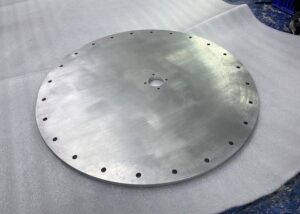
Here is a table with more data on the advantages and limitations of CNC technology :
| category | Features | Data Example |
| Advantages | High precision and high consistency | Tolerance range: ±0.005 mm, surface roughness: Ra0.4μm |
| High efficiency and automation | Processing time reduced by 30%, 500 parts can be produced in one process | |
| Diversity of materials and designs | Applicable materials: metal (aluminum, stainless steel), plastic (ABS, POM), composite materials, cutting depth: 0.05 mm | |
| Repeatability | The error of each batch of parts does not exceed 0.02 mm, and there is no obvious decrease in accuracy after continuous processing for 500 hours. | |
| Intelligent and remote operation | Program loading time: 1 minute, parameter adjustment time: 5 minutes | |
| limit | High initial cost | Equipment price: 5-axis equipment is about $500,000, annual maintenance cost: $20,000 |
| Material waste | Material waste rate: 10%-20%, producing 10 tons of parts may waste 2 tons of material | |
| Tool accessibility and workholding limitations | Complex fixture design time: 3 days, fixture manufacturing cost: $1000-3000 | |
| Programming and Operational Complexity | Operator training time: 6 months, complex part programming time: 5-10 hours |
Application Of CNC Technology In Various Industries
CNC technology is widely used in many industries due to its excellent precision, flexibility and automation. From aerospace to consumer electronics, from medical equipment to shipbuilding, CNC technology has greatly improved product quality and production efficiency.
The following are the detailed applications of CNC technology in different industries :
Aerospace
The aerospace industry is a prime example of CNC technology applications. Critical components such as aircraft wings, turbine blades, and landing gear require extremely high machining accuracy. Through CNC machining, the lightweight and strength of wing materials can be balanced. For example, I have participated in the machining of turbine blades, whose complex three-dimensional surfaces were completed by five-axis CNC equipment, with cutting errors controlled within ±0.005 mm and surface roughness reaching Ra0.4μm. This machining capability improves the high temperature performance and durability of the blades.
Automotive
CNC technology promotes efficient and standardized production in automobile manufacturing. In the production of engine cylinders, CNC machine tools can process aluminum alloy materials to an accuracy of ±0.01 mm, ensuring the realization of complex designs of cooling channels. The production of gears also relies on CNC high-precision processing, and the roughness of the tooth surface is controlled below Ra0.8μm. The automation capability of CNC allows me to complete the processing of 500 parts in one day, greatly improving production efficiency.
Medical Devices
The medical industry has extremely strict requirements for equipment accuracy and safety. CNC technology excels in manufacturing surgical instruments and implants. For example, when processing titanium alloy hip implants, CNC machine tools can achieve a matching accuracy of ±0.005 mm to ensure a perfect fit with the bone. In a batch production, I processed 3,000 experimental equipment components through CNC, and the pass rate was as high as 99%.
Consumer Electronics
CNC technology plays a key role in the appearance design and performance optimization of electronic products. When processing the middle frame of a smartphone, CNC can control the thickness within 0.3 mm, with an error of no more than ±0.01 mm. We also use CNC to produce the radiator channels of laptops, which improves processing efficiency by 40% while ensuring heat dissipation performance.
Oil And Gas
CNC technology is used in the oil and gas industry for the machining of high-pressure valves and drilling equipment. High-pressure valves require extremely high sealing performance, and CNC equipment can control the accuracy of parts to ±0.02 mm. In drill thread processing, I use CNC technology to significantly improve production efficiency and extend the service life of equipment.
Shipbuilding
Shipbuilding has high requirements for corrosion resistance and precision of large components. CNC technology is used to process marine propellers, engine casings and underwater communications equipment. For example, in one project, I processed a set of propellers with a diameter of 2 meters through CNC, ensuring an accuracy of ±0.05 mm, which effectively improved the ship’s operating efficiency.
Furniture Manufacturing
CNC technology shines in custom furniture manufacturing. Using a CNC engraving machine, I once processed a wooden coffee table, and the accuracy of its complex pattern was controlled within ±0.1 mm. This high-precision processing greatly reduces manual adjustment time and enables mass production.
Education And Research
CNC technology is widely used in engineering laboratories and educational institutions to study advanced materials and manufacturing processes. I assisted on a university project to CNC machine precision metal components for use in simulating rocket propulsion systems.
Military And Defense
CNC technology is indispensable in military equipment manufacturing. For example, the production of tank components and missile casings requires extremely high precision and reliability. The error of parts processed by CNC is controlled within ±0.01 mm, effectively ensuring the performance of the equipment.
Home Appliance Manufacturing
The home appliance industry uses CNC technology to manufacture high-precision components, such as washing machine bearings and air conditioner compressor casings. I once participated in a home appliance project where CNC machining of precision molds significantly improved product consistency and performance.
FAQs
What Is CNC Part Programming?
CNC part programming is the process of converting the designed geometry and processing paths into executable instructions for CNC machines through languages such as G code and M code. Programming usually starts with CAD design and then generates processing codes through CAM software.
How Does A CNC Controller Work?
The CNC controller (MCU) is the core of the system, responsible for receiving and executing the machining program. The controller manipulates the tool’s movement path and speed through G-code instructions, and manages auxiliary operations such as coolant or tool change through M-code. It converts the input design into precise mechanical actions .
What Is The Difference between CNC, HMC And VMC?
CNC refers to all CNC equipment, while HMC (Horizontal Machining Center) and VMC (Vertical Machining Center) are its classifications. HMC is suitable for processing large workpieces, and its spindle is arranged horizontally, which is convenient for side processing of complex workpieces . VMC spindle is arranged vertically, which is more suitable for processing flat or simple contour parts. HMC is usually used for batch processing of aerospace and automotive parts, while VMC is mostly used for small and medium-sized workpieces, such as the manufacture of electronic equipment housings.
Conclusion
CNC technology has not only changed the way manufacturing is done, but has also completely reshaped industry standards. Whether it is the processing of complex aerospace parts or the efficient production of key components in automobile manufacturing, I can feel the improvement in precision and efficiency it brings. I believe that with the deep integration of artificial intelligence and the Internet of Things, CNC technology will open up more possibilities for the manufacturing industry in the future.

